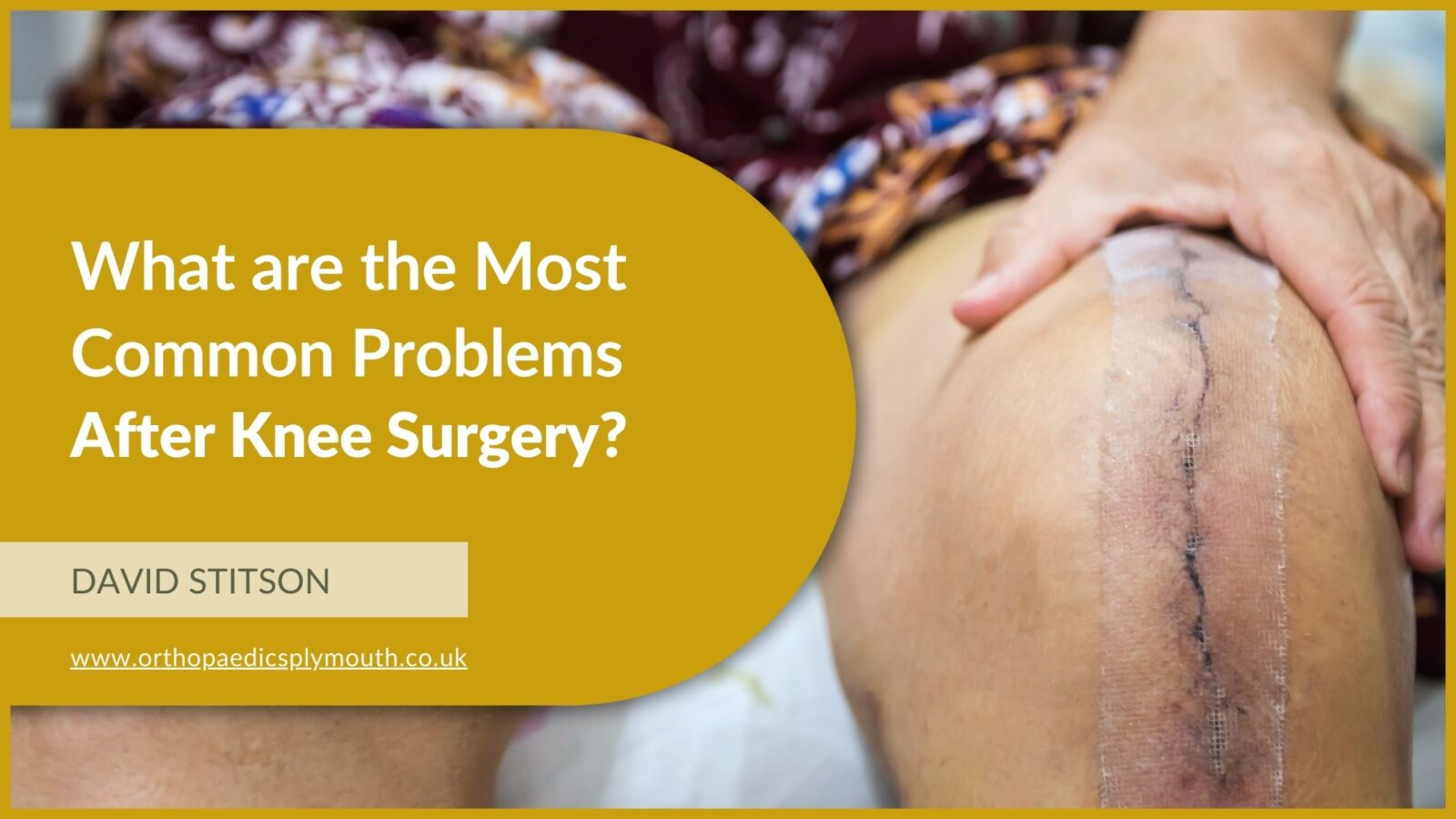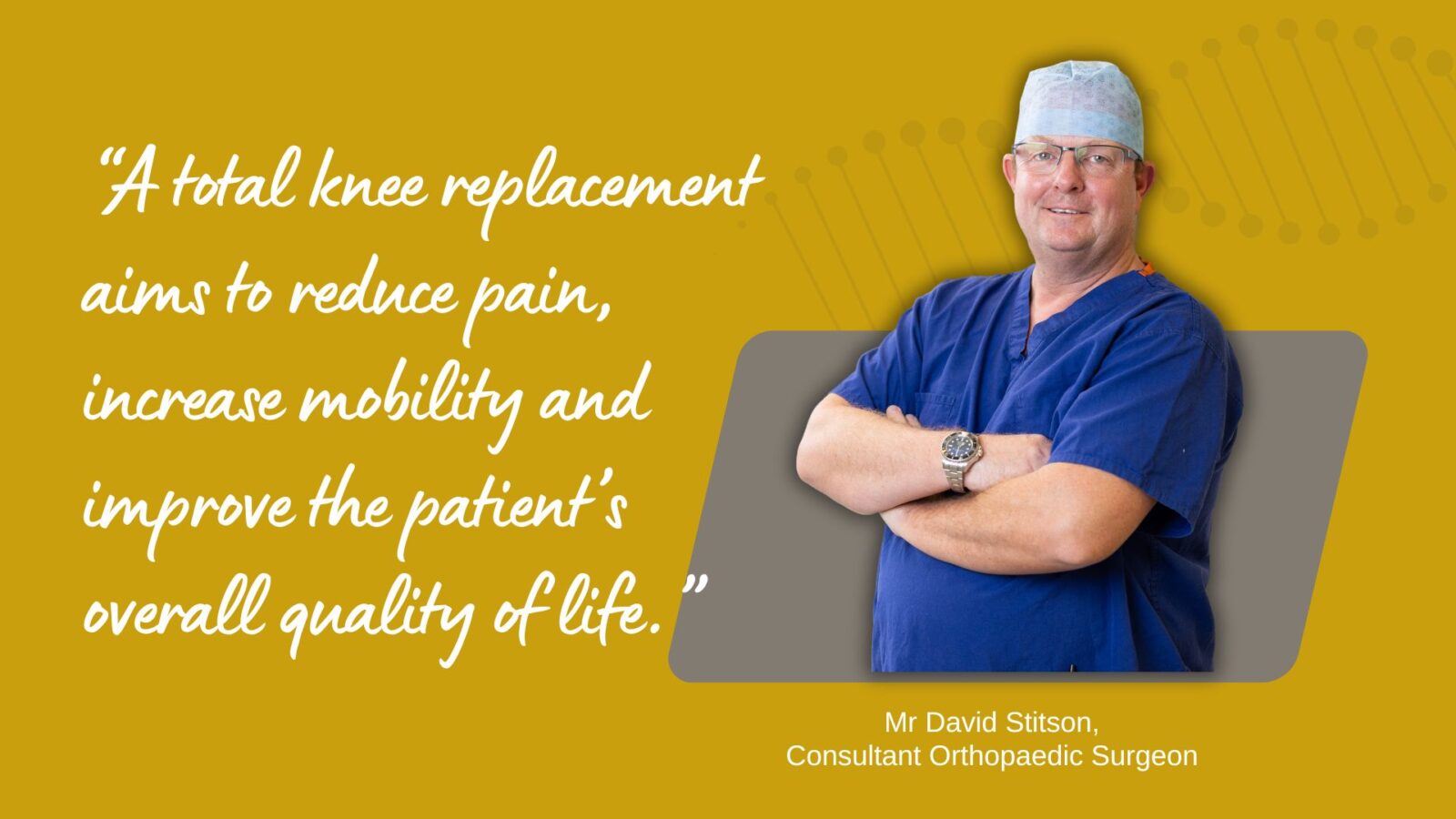Knee replacement surgery is a highly effective procedure designed to relieve pain and restore function in individuals with damaged knee joints. Despite its success rate, as with any surgical procedure, patients may experience complications. Understanding the potential risks and long-term issues is essential for anyone considering knee surgery.
Contents
ToggleWhy is a Knee Replacement Recommended?
Knee replacement surgery, also known as knee arthroplasty, is typically performed to address severe damage to the knee joint, often due to conditions like osteoarthritis, rheumatoid arthritis or post-traumatic arthritis. These conditions can cause the cartilage to wear away, leading to bone-on-bone contact, significant pain, stiffness, and decreased mobility.
In a knee replacement, the damaged joint surfaces are removed and replaced with artificial components made of metal and polyethylene, a type of plastic. The procedure aims to reduce pain, increase mobility and improve the patient’s overall quality of life when other treatments, such as medications or physiotherapy, have failed.
Here we Evaluate 6 of the Most Commonly Reported Problems After Knee Surgery
Although most patients experience successful outcomes, some report complications following knee surgery. The most common issues include:
Pain and Stiffness
The most frequently reported problem after knee replacement is pain, often coupled with stiffness. Post-operative pain is expected, but some patients experience prolonged discomfort that lasts beyond the normal recovery period. This could be due to various factors, including inflammation, scar tissue formation and less commonly due to improper positioning or sizing of the implants.
Swelling
Swelling around the knee joint and the leg is a typical post-surgical reaction. It generally subsides over time but can persist in some cases, especially if there are underlying issues like infection or delayed healing.
Infection
Infections are a serious complication that can occur either shortly after surgery or much later. Superficial infections affect the skin and wound area, while deep infections can impact the joint. Symptoms may include redness, warmth, pain, and drainage from the surgical site.
Instability or Loosening of the Implant
In some cases, the knee implant may feel loose or unstable, particularly during movement. This could be due to wear and tear of the implant over time, failure of knee ligaments or malalignment of the components. Instability may lead to pain, and difficulty walking or standing.
Blood Clots (Deep Vein Thrombosis – DVT)
Blood clots, particularly in the legs, are a risk after knee replacement surgery. If these clots travel to the lungs (pulmonary embolism), they can be life-threatening. Common symptoms of DVT include swelling, warmth, and pain in the leg. Blood thinning medication is prescribed in the postoperative period to help reduce this risk.
Nerve and Vessel Damage
During surgery, nerves that pass the knee area are inadvertently injured, leading to numbness, tingling, or weakness in the affected leg. In most cases, nerve damage is temporary, but in some, it may become permanent. Blood vessel damage may also occur. Both complications are rare.
Complications That May Require Knee Revision Surgery
While 85 to 90% of knee replacements last 20 years of more, some patients may experience complications that necessitate knee revision surgery. Knee revision surgery involves replacing part or all of the original knee implant due to various issues, including:
- Infection
Infections that cannot be cleared with antibiotics or other treatments may require removing and replacing the implant.
- Implant Wear and Tear
Over time, the materials used in knee implants can wear out, particularly in younger, more active patients. This can cause the implant to fail, necessitating revision surgery.
- Instability
A knee replacement may become unstable due to increasing laxity of surrounding ligaments or sometimes as a result of trauma causing a ligament rupture. Sometimes this will require revision using components with additional constraints built in to overcome the absence of ligament function. The use of a hinged knee replacement would be an example.
- Fractures
A fracture in the bone surrounding the implant, whether from trauma or a fall, may require revision surgery to replace or reinforce the prosthesis.
- Persistent Pain
If pain persists despite appropriate healing and rehabilitation, it could indicate implant loosening or alignment issues that require corrective surgery. This is only undertaken where a cause for the pain can be determined that is likely to improve with further surgery.
It is essential to discuss all your options with Mr Stitson, who can guide you through the treatment process and advise on how you can achieve the best possible outcome.
Long-Term Complications of a Knee Replacement
While knee replacements can and most often do improve quality of life for many years, long-term complications may still arise. Some potential long-term issues include:
Implant Loosening
Over time, the implant may begin to loosen due to wear, inadequate bone growth around the implant, or deterioration of the bone. This can cause discomfort and reduced mobility.
Stiffness and Reduced Range of Motion
Even after rehabilitation, some patients may experience stiffness or limitations in their range of motion. This could be related to scar tissue buildup or improper positioning of the implant.
Osteolysis
This condition occurs when the body begins to break down and absorb the bone around the implant, often in response to wear particles from the artificial joint. Osteolysis can lead to implant loosening and may require knee replacement revision surgery.
Prosthetic Joint Infections
Even years after the initial surgery, deep infections around the prosthetic joint can occur, potentially necessitating the removal and replacement of the implant.
Two Critical Exercises You Must Do After Knee Replacement Surgery
Knee extensions
Strengthens quads and improves knee mobility and flexibility. To do a knee extension, sit upright in a chair, extend your knee until your leg is straight, hold for five seconds and then slowly lower your foot.
Quad sets
Strengthens quadriceps, which support the knee joint and improve stability. To do a quad set, lie on your back with your legs extended, tighten your quad muscles and hold for 10 seconds.
Other exercises that can help after knee replacement surgery include:
- Straight leg raises: Strengthens the muscles that support your knee when you walk.
- Ankle pumps: Reduces swelling and strengthens muscles.
- Wall slides: Helps you get into a slight squat position.
- Floor polishing: Involves bending your knee back and forth while sitting on a sturdy chair.
- Cardiovascular exercise: Improves range of motion and strength and helps with healing.
- Stair climbing: Strengthens and builds endurance.
You should avoid high-impact activities like jogging and jumping after knee replacement surgery.
Get Expert Surgical Care with David Stitson
David Stitson is a leading specialist in knee replacement surgery, based at the Nuffield Hospital in Plymouth. With full practice privileges and admitting rights, Mr. Stitson provides comprehensive care for his patients, guiding them from the initial consultation through to post-surgery rehabilitation.
As a member of the BMA, BOA, CSOS, RCS, and GMC, and with many years of Consultant level experience in joint replacement surgery, David Stitson ensures expert care and support throughout your treatment journey.
If you are considering knee replacement surgery, you can rely upon Mr. Stitson to provide the highest level of care that is tailored to your specific needs.
Q: How long does it take to recover from knee replacement surgery?
A: Most patients can resume normal activities within 3 to 6 months after knee replacement surgery. Full recovery, including regaining strength and range of motion, may take up to a year.
Q: How long does a knee replacement last?
A: 85 to 90% of knee replacements last 20 years or more. This may be influenced by the patient’s activity level, age, and overall health.
Q: Is knee pain normal after a replacement?
A: While some pain is expected in the early stages of recovery, persistent pain that lasts several months after surgery may indicate complications such as implant loosening, infection, or nerve damage.
Q: Can I kneel after knee replacement surgery?
A: Kneeling can be uncomfortable after a knee replacement, but it is typically not harmful to the implant. Patients should consult with Mr Stitson for personalised advice on kneeling post-surgery.
Q: What is knee revision surgery?
A: Knee revision surgery is a procedure to replace or repair a knee implant that has failed due to infection, wear, loosening, or other complications. It is typically more complex than the initial knee replacement.
Improve Your Quality of Life
Knee replacement surgery can significantly improve the quality of life for those suffering from debilitating knee conditions. However, it’s essential to understand the risks, both short-term and long-term, that may arise after the procedure. Patients should be aware of the signs of complications and work closely with their healthcare team to ensure the best possible outcome.
About Knee Surgery
Knee replacement surgery replaces the worn out, painful and stiff knee joint with a new prosthetic joint. This procedure which may be a partial or a total replacement is normally performed under spinal anaesthesia and is usually followed by a night or two in the hospital. Day-case knee replacement surgery may be an appropriate option for you.

About Mr Stitson
David Stitson is a Plymouth-based Consultant Trauma and Orthopaedic Surgeon. Trained both in the UK and internationally, he has worked in medicine for more than 20 years for the NHS, for the Royal Air Force and in private practice. Mr Stitson operates privately at the Nuffield Health Hospital, Plymouth.

The Nuffield Plymouth CQC Rating
The Nuffield Hospital has a history that spans over half a century and has built a reputation for high standards of care, professionalism and expertise in delivering health services. They aim for continuous quality improvement in everything they do.
Active Quality and Governance programmes are in place at the Nuffield Hospital Plymouth. As part of this, the hospital is inspected by independent healthcare regulators to ensure it meets the fundamental standards of quality and safety as determined by the regulating body (CQC).
In the most recent inspection, Plymouth Nuffield Hospital was rated as ‘Good’ overall, however, the surgical element of the inspection was rated as ‘Outstanding’. The hospital was referred to as:
“Outstanding in effective and caring, and
Good in safe, responsive and well-led.”





